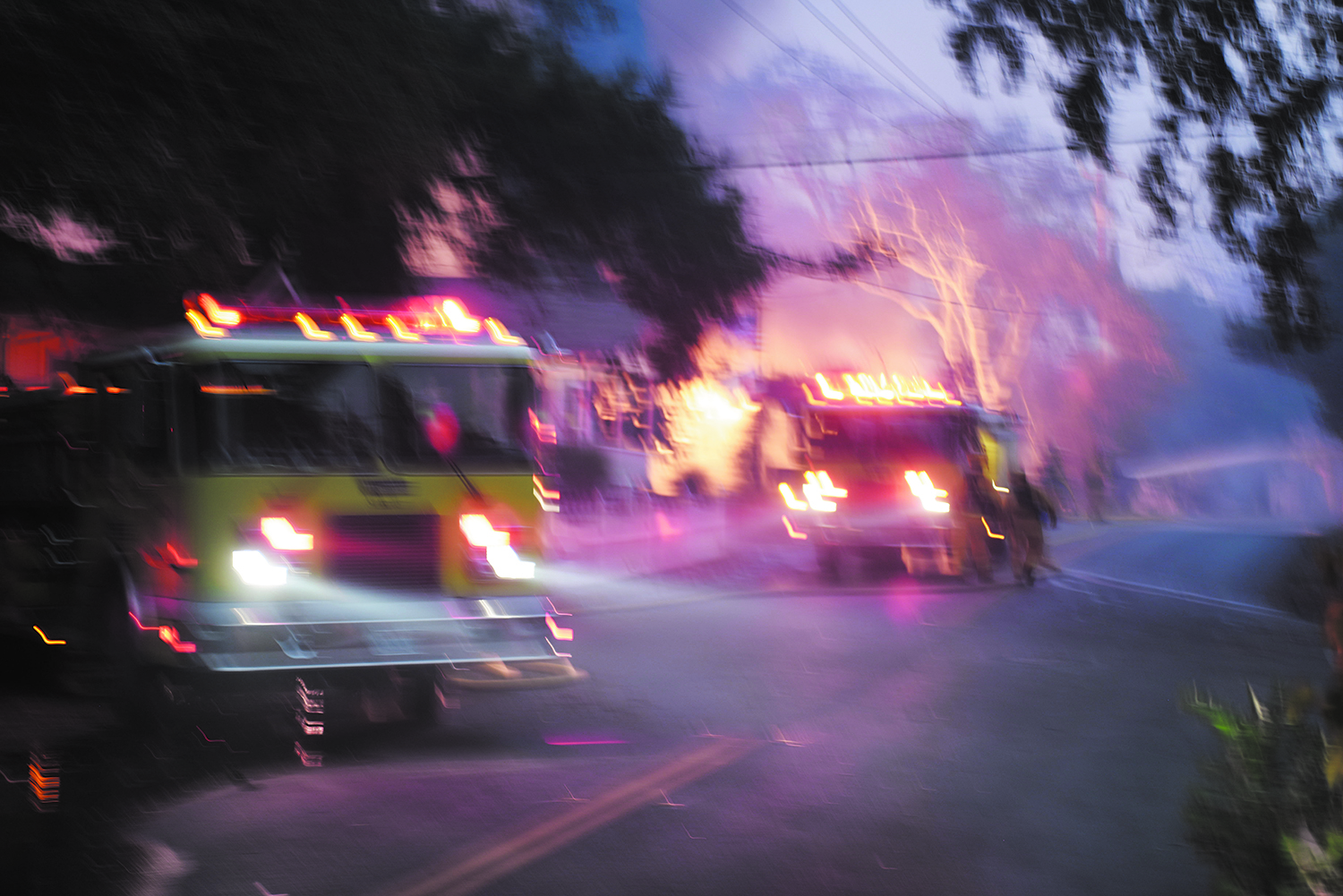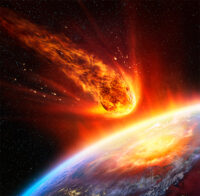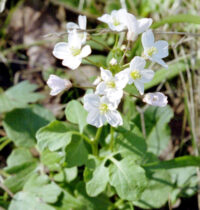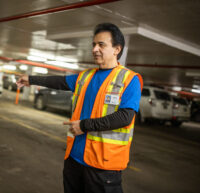There is a harsh irony to the fact that when, in the early morning hours of October 9, 2017, Bernie Krause looked out through the glass panel of his front door and saw a ring of fire encircling his Glen Ellen home, he knew at once he was looking into the eye of global warming.
Bernie Krause owns and archives the soundscape of Planet Earth. He has recorded nature in every extreme, he knows the lush soundprint of a healthy forest, and he knows the profoundly sad silence of a forest clear-cut, or burned to the ground. So he refuses to sugarcoat the phenomenon with the favored phrase “climate change,” because he insists that the one, calamitous, scientifically verifiable fact is that the Earth is warming at an alarming rate, and the results were right outside his door.
Bernie and his Wife Cat escaped with their lives, with literally three minutes to spare, as they rocketed down a quarter-mile drive through a tunnel of fire, leaving behind a lifetime of artifacts and the home they called “Wild Sanctuary.”
But they lost more than their home. “Everything on the property was destroyed,” Bernie said in the aftermath of escape. “All the trees. All the vegetation. The animals that used to live there, the foxes and the coyotes and the owls. Everything else was gone. And when I went back to see it, the place was dead silent. Whereas before, there was a vitality to it, and it expressed a voice that was luminous.”
Fortunately, Bernie’s digital archives – 4,500 hours of planetary sound, the voices of 15,000 species – were duplicated. One copy was safe in a Santa Rosa bank vault, another – the only fully complete record he had, stored in a 10-terabyte hard drive as big as a loaf of bread – is in the hands of a nonprofit foundation in Paris.
Bernie and Cat’s Wild Sanctuary was less than a mile from the heart of the campus at SDC, the former Sonoma Developmental Center, now embroiled in a smoldering struggle that will determine whether or not a profit-driven developer, an indifferent County bureaucracy and a distant state landowner will allow the construction of 1,000 new homes on a piece of land hard up against the forested eastern slope of Sonoma Mountain. A slope loaded with a century of accumulated fuel, a slope that has not burned in recorded history. A slope that harbors an ongoing symphony of Nature’s sounds, woven through a natural corridor that allows wildlife safe passage from the Pacific coast to the wild lands east of Sonoma Valley.
The bureaucrats promoting this grotesquely over-sized development would have us believe that the 2,500 people who would live there – with their cars and their trucks, with their dogs and cats, their lawnmowers and hedge trimmers, their lights and their normal human noise, their three-story tall condos and their parking lots – will have no negative impact on the surrounding wildness. A wildness that contains the recently restored run of Chinook salmon in Sonoma Creek – the appropriately named Kings – and mountain lions, and black bears, and bobcats and black-tailed deer. And much, much more. Oh my.
The Nuns fire that incinerated the Krauses’ Wild Sanctuary, burned 56,566 acres, destroyed 1,355 structures (including a big slice of Glen Ellen and most of the farm buildings at SDC), damaged 172 more buildings and killed three people.
Nick Link, a working group member of the National Center for Ecological Analysis and Synthesis, has been pondering the staggering destruction from the recent Los Angeles wildfires and has some timely thoughts on the subject.
Link is quoted, in a National Academy of Sciences/Pulitzer Center on Crisis report, as saying, “Rather than writing a blank check, which we’re going to have to start doing more and more often for more and more communities, what if we invested a little bit up front and created more of the space?” And that’s something that land managers have been advocating for a long time. “You can see in a wildfire,” said Link, “like the ones that burn through L.A., they don’t know who from who. It’s a wildfire coming through, and it doesn’t matter who you are, what you think, or how you feel. This is a problem that we’re all going to face, and it’ll become a bigger issue, both as the climate warms up and as we continue to expand into that wildland-urban interface.”
It’s hard to imagine anything more dangerous, reckless or selfish than to shoehorn 1,000 homes, with 2,500 people, into that delicate interface at SDC.









Be First to Comment